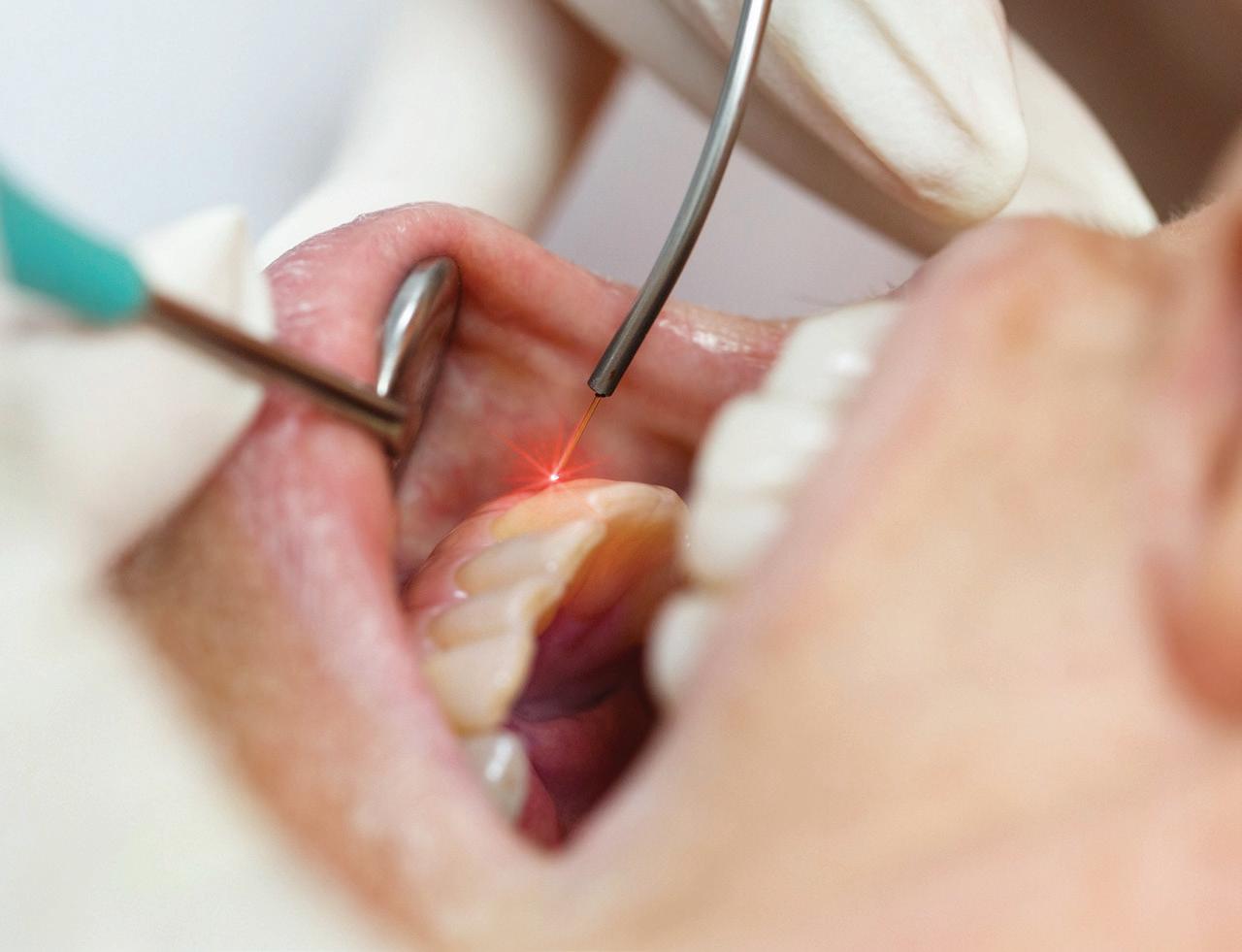
4 minute read
Unlocking the Full Potential: Laser Use for Hygienists in Colorado
By: Joy Raskie, RDH
The dental profession has witnessed remarkable advancements in recent years. In Colorado, there have been significant changes in dental regulations, expanding the scope of practice for dental hygienists and introducing exciting opportunities for enhancing patient care. This article is dedicated to shedding light on these changes, dispelling any lingering misconceptions, and providing an in-depth exploration of the extensive range of procedures that dental hygienists in Colorado can now perform using lasers.
THE EVOLUTION OF LASER USE
In 2015, Colorado's dental statute language was changed which imposed limitations on the use of lasers by dental hygienists, restricting their application solely to pocket disinfection.1 The rules specified that laser settings should preclude the removal of soft tissue. This was a significant restriction on the full utilization of laser technology, leaving dental hygienists craving more flexibility in their practice.
THE LASER REVOLUTION
A transformation occurred in 2018, driven by collaborative efforts from dental professionals and governing bodies. This transformation brought about a pivotal change in Colorado's dental law and rules concerning the use of lasers.2 The new rules represent a significant shift in the landscape of dental hygiene practice. Notably, the most groundbreaking change was the removal of language that limited hygienists to only using the laser for “pocket disinfection” and now reads “use a laser within the dental hygiene scope of practice,” a change that extends the range of procedures they can offer to their patients.2 This shift has opened the door to a broader scope of practice for dental hygienists and a wealth of opportunities to enhance patient care.
COMPREHENSIVE TRAINING REQUIREMENTS
Among the critical changes that have taken place is the requirement for dental hygienists to undergo comprehensive training before they can use lasers in practice. The training is a mandatory component of laser use and consists of eight hours of instruction, including a hands-on component.2 Participants are also obligated to receive training specific to the laser device they intend to use. These stringent training requirements are in place to ensure that dental hygienists are well-prepared to operate lasers safely and effectively, upholding the highest standards of patient care.
PROCEDURES AT YOUR FINGERTIPS
With the recently gained flexibility to use lasers to their full extent, dental hygienists in Colorado now have a variety of laser procedures at their disposal.
Let's delve into some of the most common and impactful applications:
• Treating Lesions: Dental hygienists can effectively use lasers to treat cold sores, herpetic ulcers, canker sores and aphthous ulcers. This advancement minimizes patient discomfort and expedites the healing process.3-6
• Desensitizing Teeth: Laser technology is a potent tool for addressing tooth sensitivity. Dental hygienists can precisely target sensitive areas, providing patients with a more comfortable and pain-free experience.7,8
• Laser Bacterial Reduction (LBR): LBR is a cutting-edge technique that enables dental hygienists to reduce harmful bacteria in periodontal pockets, leading to improved oral health outcomes and enhanced overall patient well-being.9-11
• Laser Decontamination (LD)/ Laser Assisted Perio Therapy (LAPT): LD/LAPT represents an advanced approach to treating periodontal disease. The laser can be a precise bacterial hunter, reaching deep into periodontal pockets to eliminate anaerobic bacteria colonies that hide in the shadows.12-15 This targeted approach not only addresses the surface but also gets to the root of the problem, significantly enhancing the chances of long-term periodontal health. But LAPT doesn't stop at removing bacteria; it’s also a catalyst for healing. The laser's energy stimulates the surrounding tissues, prompting them to repair and regenerate.16 As these tissues rejuvenate, they become healthier and more robust. With time, the once-deep pockets gradually become shallower, reducing the risk of recurring periodontal issues.12-15,17,18 It's a profound step towards achieving and maintaining optimal periodontal health.
• Photobiomodulation (PBM): Dental hygienists can utilize lasers for photobiomodulation, a technique that stimulates tissue, reduces pain and decreases inflammation. One common application is TMJ pain treatment, offering relief to individuals experiencing jaw pain during lengthy appointments or due to chronic Temporomandibular joint (TMJ) conditions.19-22
Colorado's dynamic dental landscape is continually evolving, and dental regulations have adapted to accommodate these changes. With the ability to use lasers for a broad range of procedures, dental practices are poised to transform the role of the dental hygienist. However, it's imperative to recognize the importance of proper training to ensure the safe and effective use of lasers. If you're considering incorporating lasers into your practice, it's essential to invest in training and hands-on experience tailored to the specific procedures your team will be performing. This step will elevate the quality of patient care the practice can provide.
ABOUT THE AUTHOR
Ms. Joy Raskie is a Registered Dental Hygienist. She is the Director of Education and CEO at Advanced Dental Hygiene, a company that specializes in hands-on dental laser education.
FOR A COMPLETE LIST OF REFERENCES, PLEASE SCAN THE QR CODE.







